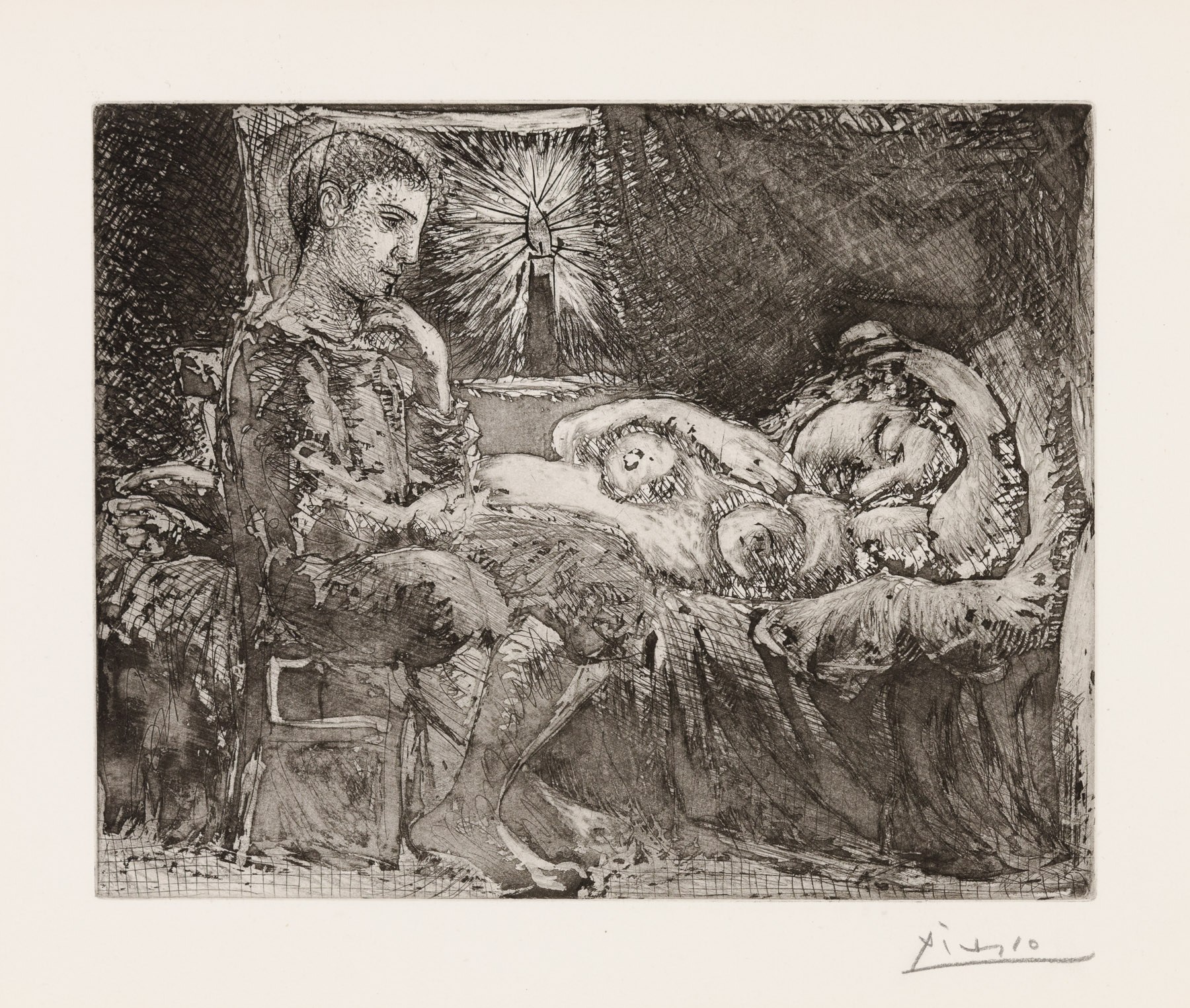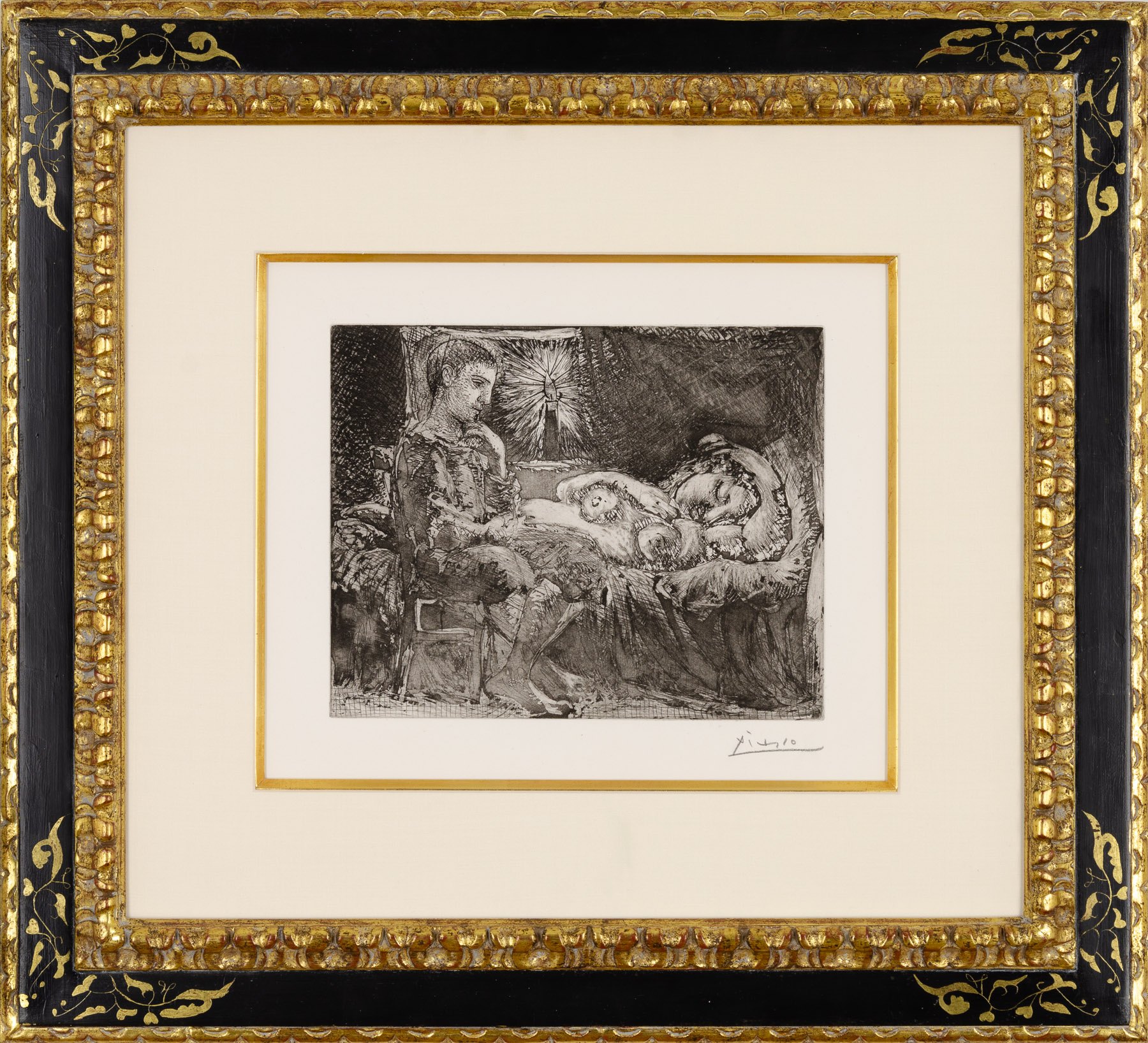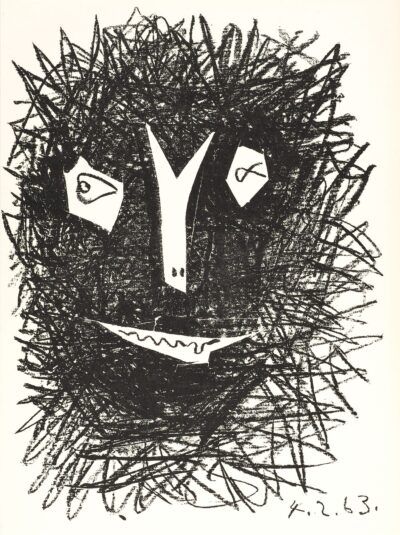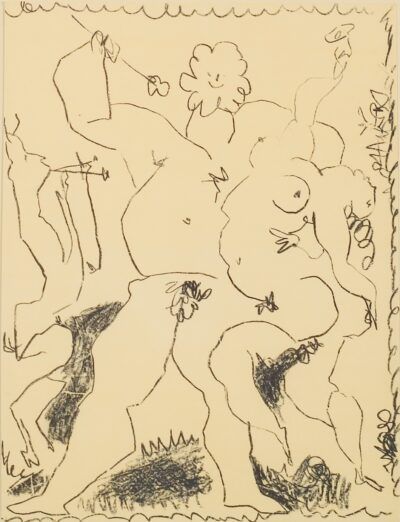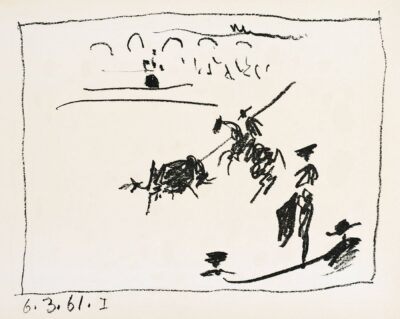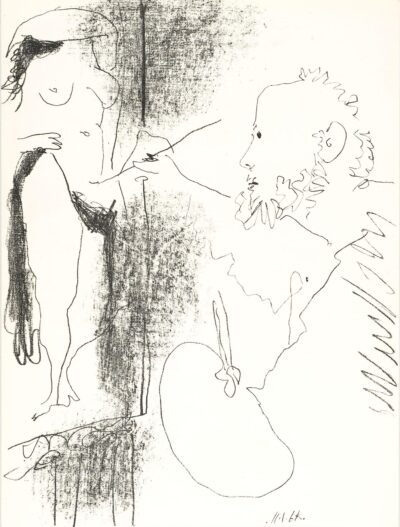Garçon et Dormeuse à la Chandelle
Pablo Picasso
Garçon et Dormeuse à la Chandelle
etching & aquatint
1934
An original hand-signed Pablo Picasso etching & aquatint print.
(Boy and Sleeping Girl with Candle)
November 18, 1934
Original etching and aquatint with burin and scraper printed in black ink on Montval laid paper bearing the “Picasso”watermark.
Hand-signed in pencil in the margin lower right Picasso.
A superb impression of Geiser/Baer’s third and final state, printed after the steelfacing of the plate, from the edition of 260 on this paper (there were a further 50 impressions printed on Montval laid paper with wider margins and the “Montgolfier” watermark, and three impressions printed on parchment). Plate 26 of 100 from the Suite Vollard. Published by Ambroise Vollard, Paris, 1939; printed by Roger Lacourière, Paris.
Catalog: Bloch 226; Geiser/Baer 440.III.B.d.
Image Size: 9 ¼ x 11 ¾ inches
Sheet Size: 13 ¼ x 17 ½ inches
Framed Size: 24 7/8 x 27 1/8 x 2 inches
At the end of 1934, Picasso’s mistress Marie-Thérèse Walter became pregnant, which was to eventually lead to the end of his marriage to Olga Koklova. Shortly thereafter, darkness descends upon the world of Picasso’s prints. His themes become turbulent and sometimes violent, and familiar characters undergo disturbing metamorphoses. However, in this print, made at the beginning of Marie-Thérèse’s pregnancy, the night is still and comforting – a result of the composition’s classical repose. The young woman sleeps peacefully, and the only parts of her naked body associated with maternity are bathed in the candle’s gentle light, which also graces the young man watching over her. Although the young man is not altogether tranquil, this is only because of the fixedness of his apparent concentration on his vigil and his thoughts. The room is undecorated and the candle implies a rustic, even a humble setting, but the bedclothes are rich.
Moreover, the striking effects that Picasso obtained here evoke the sumptuous light of Rembrandt’s etchings. The candle is a darker version of one by Rembrandt in the etching “Student at a Table by Candlelight” (Bartsch 148), one of the darkest of all of Rembrandt’s etchings, in which the mesh of drypoint lines builds up an extraordinary luminous penumbra and light flickers over the pensive youth and his books, an effect Picasso was striving to achieve here. The bareness of the setting notwithstanding, Picasso’s allusion to the development of Rembrandt’s light gives the young man’s thoughtfulness a meditative rather than anxious quality.
As the world of Picasso’s subsequent prints unfolds, the stillness and tranquility of this night of calm concern and untroubled sleep quickly disappear. In the Suite Vollard, this etching is number 26. The print that became number 27 shows two figures: on one side, a Sibyl, on the other a Harpy – in Greek mythology, a figure of revenge and a kidnapper of children. The image, then, expresses Picasso’s ambiguous feelings concerning the birth of his and Marie-Thérèse’s child: joy on the one hand and, on the other, fear of Olga’s jealousy, fear for the child, and anxiety over Marie-Thérèse during pregnancy and childbirth.
When the young man appears in the next plate, he is an androgynous sailor boy, devoid of sympathy and slightly grotesque; and, in the plates that follow, he gradually becomes Marie-Thérèse and falls into a cold and sometimes trance-like passivity in which she is in turn spectator, victim, and threat. Here, unambiguously male, the young man can be associated with Picasso contemplating the sudden news of Marie-Thérèse’s pregnancy and perhaps even pondering the changes a child invariably brings to lovers’ relationships.
